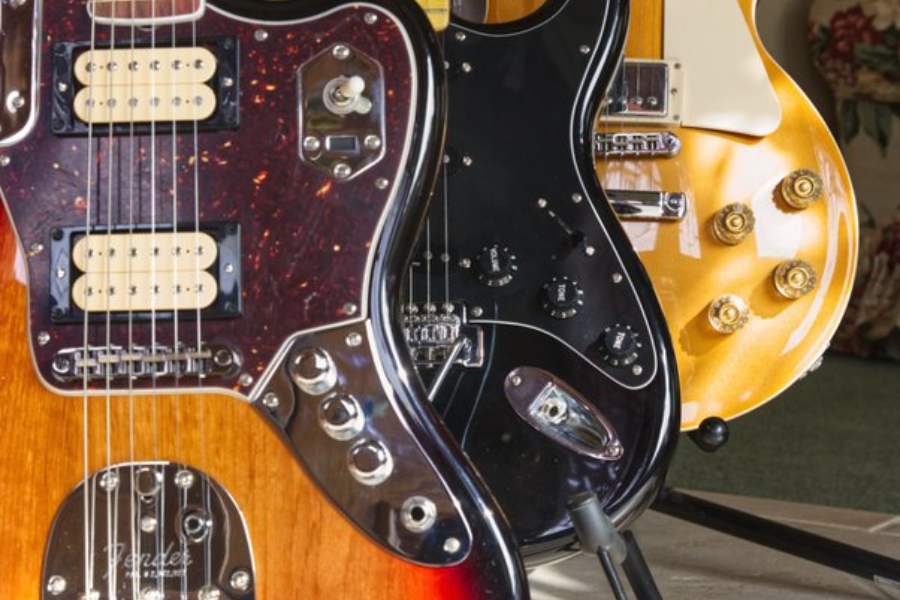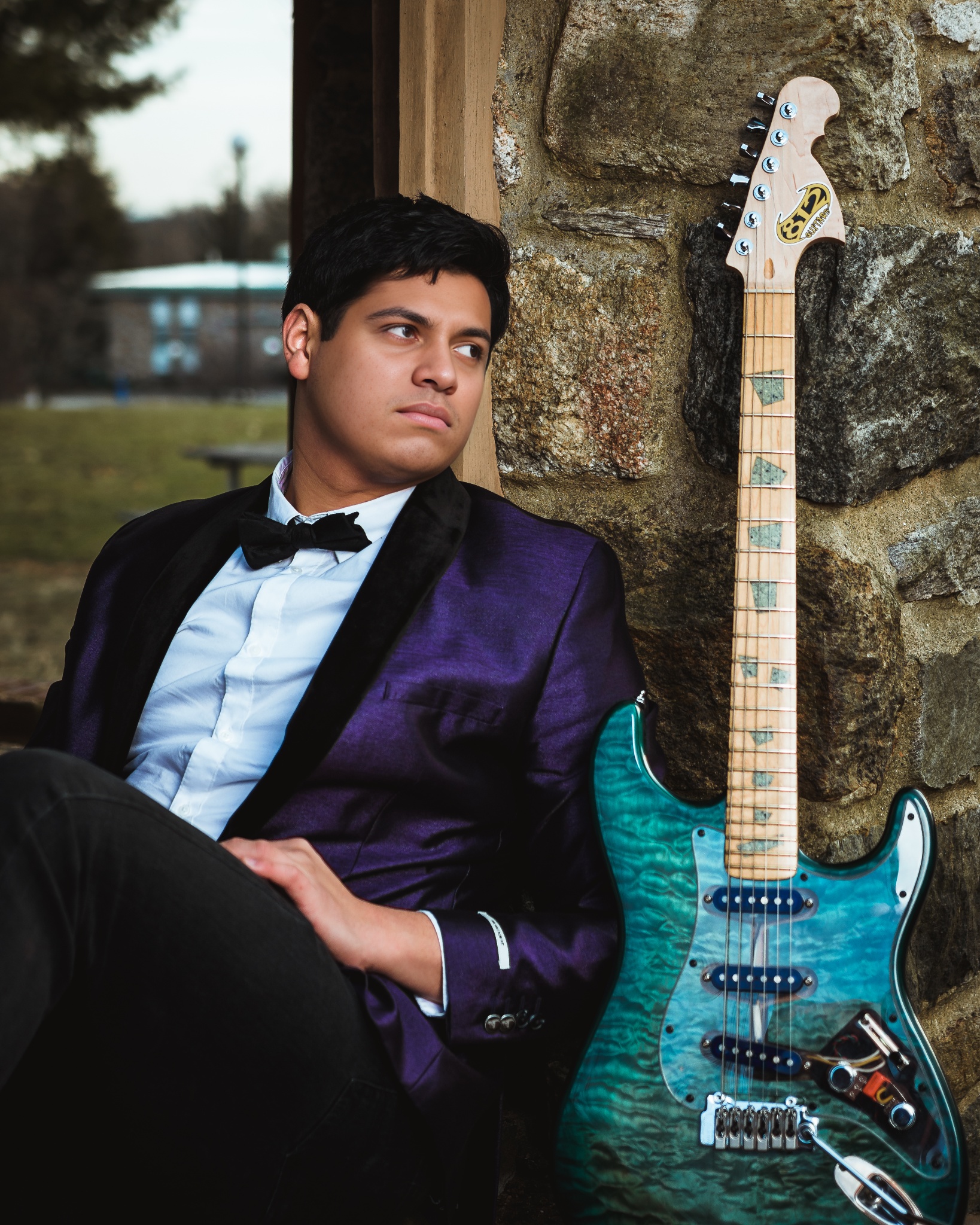Ever looked at an electric guitar and wondered what all those little knobs do? It is amazing that each knob on an electric guitar is like a magic button that can change the sound in cool ways. Some of the most commonly asked questions regarding guitar knobs: What Do The Knobs On An Electric Guitar Do? .
In this article, Eguitarmania will teach you how tweaking them in different ways can make your guitar sound bright and happy or deep and sad. It’s not just about making noise, you’re going to find out exactly what those mysterious knobs are for. By the end of this, we’ll show you how to use each knob to mix your sound perfectly, whether you’re playing alone or with a band.
Different Knob Configurations On Electric Guitar
One interesting fact is that not all electric guitars are created equal, especially when it comes to their knob configurations. These setups can greatly influence the guitar’s tonal possibilities and tweak your sound in endless ways.

One Tone and One Volume Knobs (Ibanez & other)
This is the most basic setup you’ll find on an electric guitar. You’ll often see it on types that are made to be easy to use (plug and play). It’s simple, with only one volume knob and one tone knob, but it still gives you a good amount of control over the sound.
The volume knob changes how loud the guitar sounds, and the tone knob changes how bright or dark the sound is.
This setup is great for beginners or players who like things to be simple and easy to use over sound shaping that is too complicated. Even though it looks simple, it can be very expressive, letting players set anything from sharp leads to warm, mellow beats.
Two Tone and One Volume Knobs (Fender Strat Style)
As you move up in complexity, the Fender Stratocaster is known for having two tone knobs and one volume knob. This setup gives you more precise control over your sound, so you can change your tone more easily.
The volume knob controls the sound as a whole, and each tone knob is usually tied to a different pickup (front and middle or middle and back), so players can fine-tune the sound’s brightness and warmth by choosing a different pickup.
This set-up is great for musicians who like to change tones during a show or who like the way they can be shaded in small ways.
Two Tone and Two Volume Knobs (Gibson Les Paul Style)
With two tone knobs and two volume knobs, the Gibson Les Paul is the best electric guitar for people who want to have complete power over the sound. Each set of buttons controls one of the guitar’s two pickups, so the outputs of the pickups can be blended and balanced in complex ways.
With this set-up, you can get sounds ranging from the neck pickup’s smooth, creamy tones to the bridge pickup’s bright, edgy bite, and everything in between.
Settings can be mixed and matched to make unique sounds that stand out in a mix or to explore new sound spaces. Due to its high level of control, it is a favorite among professionals and serious amateurs who want both a precise and flexible sound.

What Do The Knobs On An Electric Guitar Do?
The knobs on an electric guitar are essential tools for any guitarist. By learning how to use the volume and tone knobs and the pickup choice switch, musicians can express themselves and their ideas through music more clearly.
Volume Knob(s)
The volume knob adjusts the output level of the guitar. Turning it up increases the sound’s loudness, while turning it down reduces it.It’s directly connected to the guitar’s pickups and can significantly affect the signal’s strength before it reaches your amplifier.
Expert Insight: Many players overlook the subtleties of the volume knob. It’s not just for overall loudness; it can also affect the guitar’s tone. Lower settings can clean up a distorted signal, offering a wider dynamic range.
Tone Knob(s)
The tone knob modifies the guitar’s timbre. By cutting the high frequencies, it can make the sound warmer and smoother. Turning it up will let more highs through, resulting in a brighter sound. Typically, it works by rolling off the high frequencies, making the sound warmer and less bright as you decrease the tone.
Usage Tips: Seasoned guitarists use the tone knob to sculpt their sound for different musical contexts.
- Roll off the tone for a jazzier, mellower sound.
- Keep it high for biting rock leads or funk rhythms.

Pickup Selector Switch
Though not a knob, the pickup selector switch is crucial in shaping the electric guitar’s sound. It chooses which pickups are active, drastically changing the guitar’s sound. By selecting different pickups and tweaking the knobs, players can navigate through a diverse spectrum of sounds, suitable for genres ranging from blues to metal.
Usage Tips: Switching pickups mid-song can dramatically shift the energy and focus of your playing, useful for dynamic live performances.
- Bridge Pickup: Bright and twangy, ideal for lead playing.
- Neck Pickup: Warmer and fuller, perfect for rhythm and blues.
Beyond Basics: Push/Pull Knobs and Coil-Splitting
When pushed out, some guitars have push/pull knobs that separate the humbucker pickups into single coils. Single-coil pickups sound lighter and brighter.
This makes it possible for players to switch between the warm, thick sound of humbuckers and the clear, crisp sound of single coils without having to switch guitars.
Musical Genres and Tone Knobs
To find the best tone knob setting for each type, you need to try a lot of different settings and get good at them. Here are some ideas for how to use the tone knob to get tones that fit a certain type.
Modern Rock and Metal
A tone knob setting between 6 and 8 can give current rock a clear sound that lets riffs and leads stand out without getting too sharp. If metal musicians want a meaner sound, they might move the knob closer to 8–10. This will boost the high frequencies and give highly warped tones a cutting edge.
Jazz and other soft music
For the smooth, silky tones that jazz guitarists love, a setting between 3 and 5 is usually best. This range gets rid of the harsh high frequencies without changing how clear and expressive the guitar sounds.

Rock and Blues
A setting of about 4-6 might be best for blues players because it gives the guitar a rich, deep sound that can still bite when the player digs into the strings for emotional riffs. A slightly lighter setting, around 6–8, is often chosen by rock players to make sure their riffs and licks keep their edge and presence.
Final Thoughts
In the end, these little volume and tone knobs let you change how your guitar sounds in so many ways. Playing around with them and seeing what sounds you can make is a big part of becoming a great guitar player. That means you get to explore and find the perfect settings for your music.









